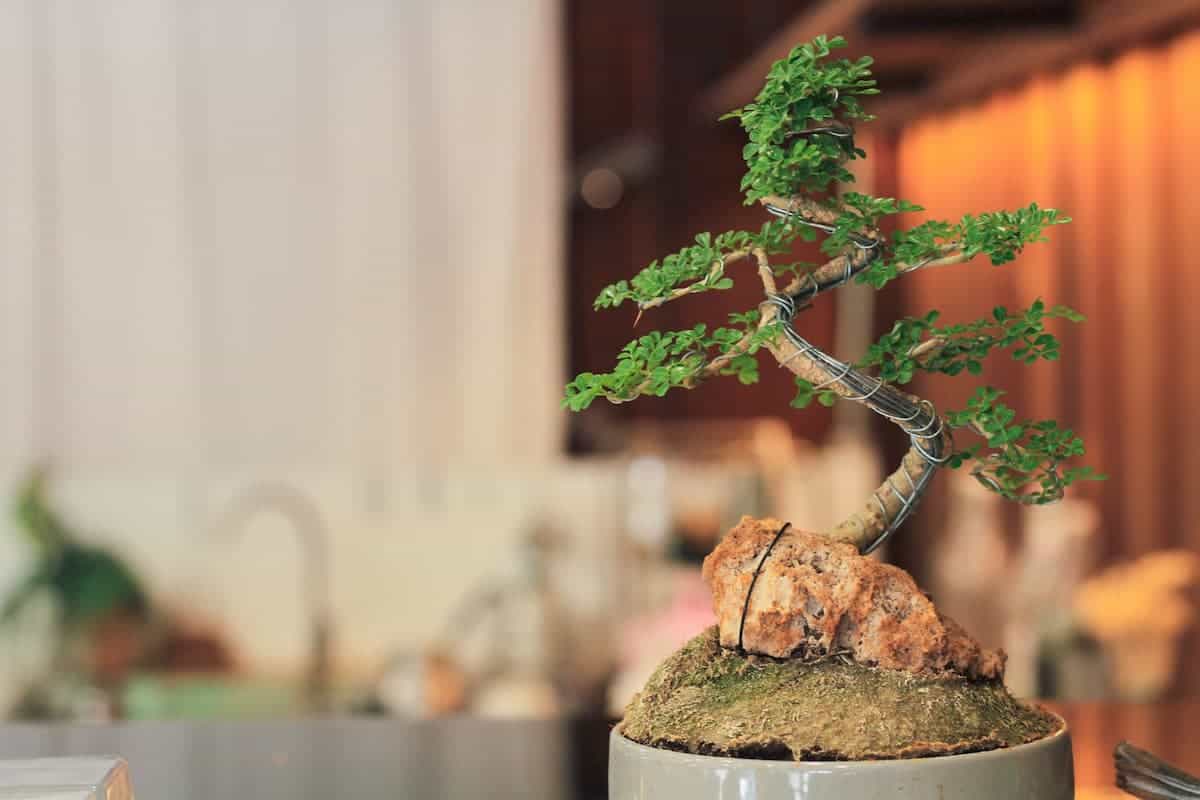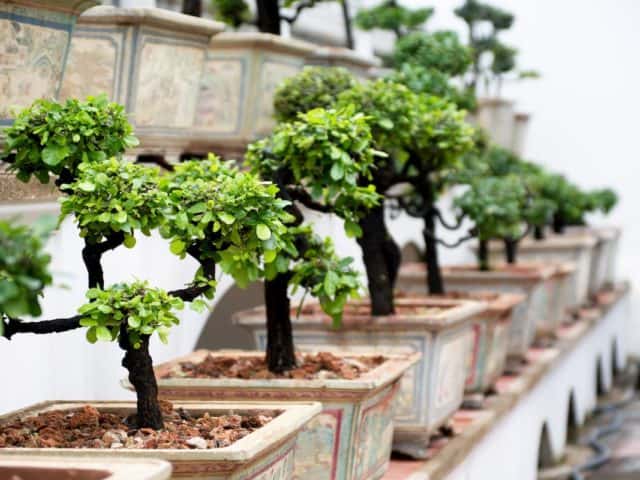Growing bonsai plants is an art not everyone can master. If you’re a beginner bonsai enthusiast, I’m sure you’ve faced your fair share of obstacles trying to make it grow. One of the most frequently asked questions is, “How do I get my bonsai to grow more branches?“
To style your bonsai or promote growth, you’ll need to trim away dead leaves or overgrown branches and stems. More specifically, maintenance pruning increases the growth of lateral branches and refines the shape of a bonsai.
There’s undoubtedly so much more to pruning as you’ll have to consider several essential factors. Make sure you read the whole article to know how pruning is done and what time is the best, among many other things.

Maintenance Pruning
Pruning regularly will ensure the shape maintenance of your bonsai. But it is essential to know some necessary information about tree growth to understand how to prune bonsai plants effectively.
Trees tend to grow apical dominantly. It means that the trunk will keep growing straight than the lateral branches.
Maintenance pruning redistributes the growth of bonsai trees to the inner branches and lower part. You’ll have to prune the upper and outer parts of the trees regularly to distribute even growth.
Additionally, pruning regularly will maintain the bonsai’s shape while also giving you control over its form. I have mentioned in a nutshell how to do maintenance pruning below.

Removing Weeds and Dead Wood
You’ll need to remove dead twigs and weeds within the bonsai pot or the tree itself. While you pluck out the weeds, you need to be careful enough not to damage its roots. Once you’re done, pick the dead twigs and weeds up and dispose of them.
Trimming Broken and Crossed Branches
Wounds on branches of trees invite pests or diseases into the wood. When crossed branches rub on each other, they cause injuries. You need to remove broken branches to direct their energy to the growth of new branches immediately.
It’s preferable to use bonsai cutters to cut these broken or crossed branches. You’ll want to cut them right above from where they extend from the tree’s trunk.
Cutting Till the Branches Have Three to Four Nodes
Junctions from which leaves grow out are called nodes. Trim the branches regularly and make sure that a twig only has three to four nodes. The perfect time to reduce the nodes is when there’s seven to eight.
The cut should be clean and just above the extra nodes. You should use a knob cutter, but a concave branch cutter will also do fine. Doing this will promote new growth and won’t let your bonsai be too big.
It would be best if you used the right tools to prune a bonsai. Some trees such as pine or conifers should not be trimmed using scissors. You should pinch the excess growth by hand rather than using tools.
Besides, you’ll also have to make sure that you’ve left sufficient space for lateral buds to grow. These are limbs emerging from existing branches and will mature into new branches.
Experts say that using tools to prune certain bonsai species will leave brown and dead foliage at the cutting. Make sure you know what your bonsai species can handle.
The cuts should be horizontal, and you should cut where a new shoot is supposed to grow.
Defoliation
Defoliation of bonsai is another type of pruning method. During summer, you’ll have to cut down all the leaves in this technique.
This will enable the growth of new leaves forcefully. Additionally, it also reduces the size of the leaves and strengthens development.
You’ll want to cut the leaves with twig shears. But remember to keep the leaf-stalk untouched. A leafcutter helps significantly in this technique. Additionally, it’s essential to know that some bonsai species aren’t ready for this technique.
The best time to defoliate is in June. Besides, most deciduous trees can withstand this technique. You should also follow proper guidelines and steps with defoliation.
Selecting What to Prune
Generally, you’ll want to remove the branches that don’t add to your bonsai’s shape and aesthetic. Branches growing in the wrong direction, thick, or large branches should be removed immediately.
Besides, branches that look unattractive should also be pruned. If you see a branch that doesn’t fit your bonsai plant’s art, you’ll want to get rid of that too. However, if it feels like the last look was better after trimming some branches; you can completely prune it back to the trunk.
The tree’s design is a critical factor of pruning, and you should keep what you want in mind while you’re at it. These are some parts of the trees that you can consider pruning.
- Suckers from the base of the trunk.
- Interior branches that are growing upward.
- Unequal branches at the top and center.
- Limbs too close to the ground.
- Suckers are growing on the higher part of the trunk.
When to Prune
You can prune throughout the year, but pruning heavily before summer seasons and during springtime is encouraged the most. Pruning also depends on the species of your bonsai. The best time to prune is when your tree is generating new growth.
For branch pruning, you should avoid doing it under extreme weather conditions, as it could be stressful for trees.
Excessive heat and direct sunlight can potentially damage the cuts on the bonsai. In winter, the cuts can freeze or have an overgrowth of dense foliage.
Besides, the internodes could be too long if you prune during winter. So I strongly recommend pruning in spring or autumn besides summer seasons when the weather is a bit mild.
You need to know more about the cycles of your bonsai and then time your pruning. Deciduous trees like maple and cherry should be pruned in the early spring, while pines and coniferous trees should be pruned in June or July.
For the defoliation technique, you’ll want to do it in June because it gives your bonsai enough time to prepare for cold winter weather and grow new leaves.
I recommend giving the spring growth a little time to harden and then defoliate afterward.
Aftercare
As I’ve mentioned previously, you will need the right tools suitable for your bonsai species. The tools should be very sharp to produce a clean cut on your bonsai.
After you’d have pruned your bonsai, you’ll need to take the necessary precautions and care for it appropriately.
Pruning could be fatal for your bonsai if you don’t do it properly and don’t seal your tree’s wounds. Firstly, you’ll have to close the wounds and cuts on your bonsai with glue or a sealant.
Besides, you will also have to ensure that your bonsai is appropriately watered, fertilized, and mulched. Immediately after pruning, water deeply once, but don’t repeat this for a while to prevent over-saturation. It’s best if you watered everyday lightly once.
Finally, use a specific bonsai fertilizer and dilute it so that it’s only half-strong, then apply to the soil of your bonsai. You can choose liquid or granular fertilizer for smaller and larger bonsai plants, respectively.
For defoliation, you don’t need to tend to your bonsai specifically. If you have partially defoliated your tree, make sure that you don’t expose the inner tree leaves to direct sunlight.
I recommend putting the tree in a shadowy area for a month. Additionally, make sure you have shaded the bark to avoid sunburn.
Final Thoughts on How Do I Get My Bonsai to Grow More Branches
If you are working to get your tree to grow and expand out with more branches you will typically be working on managing growth and trying to control direction and lengths.
To maximize and control growth proper pruning has to be done on the tree in the proper time, this can help spur on growth in the areas you expect by pruning the growth in the incorrect directions.
If you haven’t purchased your tree to start I highly suggest checking out Bonsai Boy as they are a US company run out of New York who sell high quality bonsai at many price ranges, along with some over 100 years old!!






